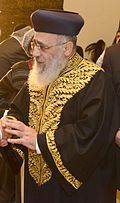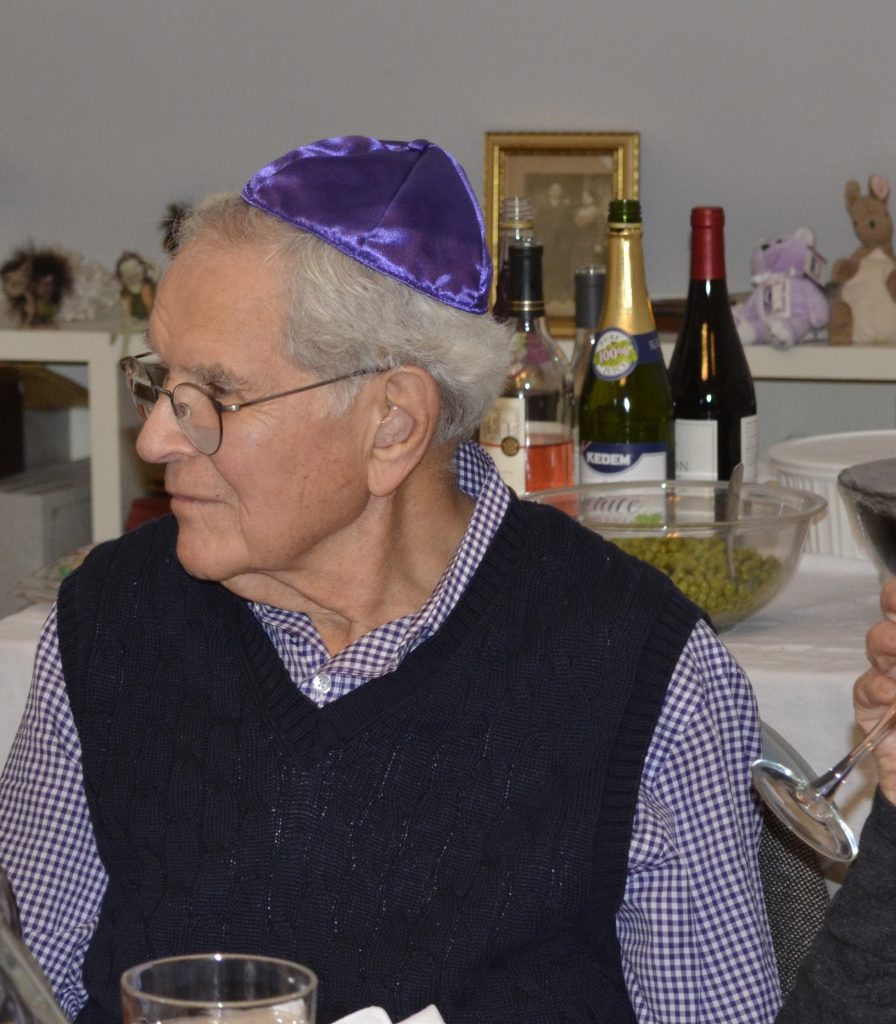On the Definition of the Word “Jew”
The most difficult problem I had to navigate in constructing
a PhD thesis was overcoming the problem most people, including scholars, have
with understanding the definition of the word “Jew” and its ideological
corrolary, “Judaism.” People use the word “Jew” in ways that suggest they
imagine they know the definition of the word. It calls to mind a common
aphorism, “I don’t know how to define it, but I know it when I see it.” For me,
as a scholar of the very period when Judaism in its modern formulation began to
take shape, the realization hit home that the greatest scholars of my
generation and the generations preceding me were just as guilty as ordinary
people of misunderstanding and misusing the word “Jew.”
How are we going to approach the question of defining this
word? Of course, one way would be to look words up in the dictionary. We could
check “religion” and then “Jew” or “Judaism.” But dictionaries are ill suited
to answer complex issues. How might an anthropologist or a philosopher or a
historian go about defining these terms? To grasp the problem, I think it works
best to conduct a bit of a thought experiment. Consider Jewish communities and
Jews in our own day and in our own environment. How do we know the people we
are thinking about are Jews? How would we define the religion that they observe
in their places of worship?
Most people who know anything about Jews and Judaism know
that in the modern world there are different types of Jews. A person might
know, for example, that a Jew is supposed to cover their head while worshiping,
and perhaps even know the term kippah or yarmulke for that head
covering. But where is the evidence in the Torah (Pentateuch) or the Bible that
people needed to cover their heads during worship? And on the other hand, many
modern Jews, especially in synagogues of the Reform and Reconstructionist movements,
gather and pray bare-headed. Who decides these things and upon what do they
make these decisions?
Realizing that while a unanimous standard is probably
impossible, nevertheless how would we try to describe the religion which
defines Judaism? Things that you will almost certainly hear as soon as the
question is asked, 1) A belief in the importance of the Torah, defined as the
first five books of the Hebrew Bible; 2) observing certain dietary restrictions
such as avoiding pork, shellfish, and mixtures of milk and meat;
3) a common liturgy with elements familiar to any Jew who attends synagogue
such as the Amidah (a standard set of benedictions),
the Qaddish (also spelled, Kaddish) recited several times in
every service); 4)
the notion that a quorum of 10 adults is required for communal worship;
5) a common set of holidays including the Sabbath,
Rosh haShanah (the Jewish New Year),
Yom Kippur (the Day of Atonement),
Passover;
6) investing the authority to make religious decisions in the person of a
rabbi.
Note that many indisputably Jewish groups nevertheless do not accept all of
even these basic standards.
Modern Jews have recently (in the last half-century or so)
been confronted by groups which assert their own special entitlement to
classification as the “true” Jews or the “true” Israel. Strangely enough, this
is a modern form of one of the oldest challenges to Jewish identity, namely the
Christian Church. It was (and doctrinally still is) the claim of the Church
that through the agency of Jesus and his apostles, biblical authority has moved
to those who have accepted Jesus as their Lord and Savior. The newest
challenges have come from some African Americans claiming that they are the
true Israel, and the most recent, the claim of some Jews or people claiming to
be Jews, that true Judaism must include recognition of Jesus—the so-called Jews
for Jesus Movement, and now often termed, “Messianic Jews” or “Messianic
Judaism”.
What all these versions of Judaism share is that none of
them resemble the religious beliefs, liturgies and behaviors of people living
in the time when there was a Temple to the LORD in Jerusalem—with brief
interludes according to biblical history, from the era of David until the
destruction of the Temple in 70 CE.
Many of the points I mentioned above could be the subjects
of entire books, so to keep the narrative brief, I’ll have to make some
simplifications. Starting with point number 1) above, many of my friends would
howl in protest if I tried to claim that ancient versions of Judaism did not
revere the Torah. But the plain, simple truth is that the Torah did not even
exist as a book until the era of Ezra/Nehemiah (ca 450 BCE, roughtly a thousand
years after the time of Moses). The Bible itself recounts the story of how a
book of the Torah was “discovered” during the reign of King Josiah.
If that book was the larger part of Deuteronomy, as most modern scholars hold, we
can say that no one until the time of Josiah was aware of a rule that
Jerusalem, and the Temple of Jerusalem alone, was suitable for Israelite
sacrifice and worship.
But there is something even more important about the notion
that the Torah is the ultimate source of law and custom. No one today, not even
the most Orthodox of the ultra-Orthodox, believes that we should follow large
parts of its rules. Of course, you’ll want examples.
1)
The Torah demands the death
penalty for anyone who violates the Sabbath. Jews throughout the ages have
found ways to ignore this clear pronouncement.
2)
The death penalty is also
required for all sorts of infractions: adultery, incest, cursing or hitting a
parent, idol worship, encouraging heathen belief, the daughter of a priest
found liable for prostitution, a woman accused of adultery who cannot pass the
required ritual. Deutronomy 13 demands the execution of an entire city if the
inhabitants went along with some sort of idolatry. Numbers 1 demands the
execution of an Israelite who tries to do the work of a Levite.
3)
The Torah demands
polygamous marriage when a married man’s brother dies childless leaving his
widow. Rabbinic Judaism has made it all but impossible to honor the Torah’s
requirement here.
4)
If a woman is suspected of
adultery, the Torah imposes a form of trial by fire.
I could go on like this for a long time. People who devote
their lives to religious principles have an uncanny ability to live in an
intellectual form of denial. I assure you that if I raised these issues in the
context of a get-together of Jews practicing the Orthodox version of Judaism,
they would propose numerous explanations for why we are all honoring even these
provisions in the Torah. And that, perhaps strangely enough, is the message
here. From the perspective of people outside looking in, they are simply in
denial, not much different from Mormons hearing that Jesus could not possibly
have come to America or Muslims being told that Mohammed never set foot in
Jerusalem. But every religious group has a set of principles by which to claim
that their views are enshrined (so to speak) in historical fact.
Let’s return to the main point. If you were to describe a
modern Jew and the form of worship they invoke when gathered, what would you
say? You would notice some physically prominent aspects of dress (again
somewhat dependent on the movement within Judaism) such as various forms of
head-coverings, scarves with fringes, sacred dressings called “phylacteries” (t’fillin)
which would be seen as cubes mounted by leather straps on the head and left
arm.
Jews from every branch of Judaism gather in places called
“synagogues”—interestingly a word which originated in Greek rather than Hebrew.
If you ventured into the synagogue, you would see that the service was led by
either one of the congregants or perhaps the congregational rabbi or a singer
called a hazzan or cantor. The congregation in general would be governed
by a rabbi who decides the rituals of the congregation.
You would also see a prayer book called a siddur
which provides guides for the various daily, weekly, monthly, and annual
rituals. While there are different versions of the siddur for the
various movements, much of the content is standardized based on ancient models.
I’ve already touched on this above, but to provide just a bit more detail, the
service requires a quorum of ten individuals (men for Orthodox congregations,
adult men and women for most other movements) without which the communal
prayers cannot be recited. The service is built on units which include modules
designed to reflect ancient practices. For example, the morning service is
called shaharit which means “morning” or “dawn” and was the name given
to the morning sacrifice when the Temple stood in Jerusalem. On the Sabbath,
there is a service unit called musaf which means “additional” and is
designed to reflect the additional Sabbath sacrifice that was offered on that
day in Temple times. The afternoon service is labeled minhah which was
the grain offering offered in the Temple in the afternoon when it stood. Many
modern Jews also meet for a nighttime service called ma’ariv which means
“evening” and corresponds to nothing from the Temple era.
The core of each of these modern services is a prayer called
the Amidah which means “standing” or Shmoneh Esrei, which means, “the eighteen benedictions.”
As you are beginning to sense, the complexities grow and grow because while
there are various versions of this prayer for various occasions, in none of
them do Jews recite 18 benedictions. The most frequently recited version has
19, the Sabbath service version, just 7.
I think this is
sufficient data for me to try to make my point. You now have an idea of how
Jews dress, gather, and worship in our own time. Now let’s set the time machine
back to the period when the Temple still stood. How recognizable would the
people and their religion be to you?
First, while there
were synagogues very late in that Temple era, they were not used for prayer.
They were essentially schoolhouses. Almost no one in those days could afford to
own the sacred texts, so synagogues arose to house sacred texts for communal
study. People who wished to approach God understood that there was only one way
to do it: a pilgrimmage to God’s home on Earth, the Temple of Jerusalem. A book
of the Torah demanded no less.
Who were the
authority figures for the Judeans? There was a king—and if you didn’t think the
king had power, you might find yourself mounted on a cross. If you needed an
explanation of what to offer in the Temple on your pilgrimmage, that was the
job of the priests and levites. I suspect some of the merchants who lined the
entrances to the Temple would have been happy to oblige as well.
Here is what you
would not have seen: rabbis. Now, I know that if you read traditional Jewish
texts like the Mishnah (composed about 250 CE) you will find entire generations
of rabbis who lived according to the Mishnah while the Temple stood, and for
about 200 to 300 years before. But you won’t find any references to those
rabbis in texts written before 70CE.
Now, here I must
add a complication. Perhaps oddly enough from a Jewish religious perspective,
someone could complain that one very famous “rabbi” (so idenitified in the
Mishnah) was mentioned in the Christian Bible, namely one Gamliel. There are
several aspects to that identification. First, Gamliel is not called a rabbi in
the two places he is mentioned, Acts and Acts of the Apostles. He is identified as a
Pharisee, sometimes called a “doctor of the law” in modern translations.
Second, we must note that both of those sources date from the period after the
destruction of the Temple, so once again we lack evidence for a “rabbi” which
predates the loss of the Temple. By the way, while Josephus certainly lived
while the Temple was in existence, everything Josephus wrote was written after
the destruction of the Temple.
Rabbis are not
mentioned in any of our major sources which predate the Temple destruction.
There are no rabbis in Josephus, Philo, or any of the Dead Sea Scrolls.
What this means is
that the religion we know as Judaism is entirely the construct of a theocratic
class which did not exist prior to about 200 CE, and which is granted
absolutely no authority by any source prior to that date. All the sources, and
among them are the Hebrew Bible (“Old Testament”), Apocrypha, the Dead Sea
Scrolls, the Christian Bible, the writings of Philo and Josephus, all these
sources recognize many types of religious authority: kings, prophets, seers,
elders, priests and levites. Nowhere do we find the notion that mere study
without the sanctity of these other qualifications grants religious authority.
What these rabbis
accomplished in the decades and centuries following 200 CE was nothing short of
a revolution. Their rulings abrogated huge portions of the Torah and replaced
them with a theology that could only be described as alien to biblical ideology.
If a person can’t get to the Temple in Jerusalem, that prayer called the Amidah can serve as a replacement. Can’t offer a sacrifice? Just burn a small
amount of the bread dough and that will suffice. Accuse a woman of adultery?
Sorry, no one knows how to perform the ritual of the suspected adultress (sotah), so you’ll have to find another way to solve your marital issues.
Think someone deserves the death penalty? Well, you’ll have to show that the
sin was viewed by two reliable witnesses who warned the person of his liability
before he committed the act.
It is probably
impossible to convince anyone these days that people who lived in the era of
Jesus and Hillel (if indeed he is not a figure of legend) should not be called
“Jews.” But it is vital to a proper appreciation of history that we understand
that no modern Jew lives their life in anything remotely resembling the ways of
life of Jesus and Hillel. Jesus, Hillel, Josephus, Philo, Herod—all these
people believed that there was only place where God can be worshipped, the
Temple in Jerusalem. They believed that the only proper way to worship God was
by presenting offerings in that Temple. They believed that all religious
authority was invested in priests and levites, but that the Torah had also
granted authority to kings, prophets, and elders. They sought out the opinions
of seers and soothsayers. Even a half-century after the the Temple was
destroyed, the people who followed a charismatic leader named Simon ben Kosba
did so because they believed him to be invested with sacred authority—the
notion of a “messiah” which Christians were actively arguing was a unique
source of authority. Ben Kosba’s followers nicknamed him “bar Kokhba”, the son of a star which was an allusion to a verse in the book of Numbers. His detractors, by the
way, nicknamed him “ben Kozba”, the
son of a lie.
And yes, there were
the beginnings of communities where a teacher was also granted religious
status—the Dead Scrolls mention someone they called the “Teacher of
Righteousness.” Perhaps it was from such seeds that rabbinic Judaism emerged a
century or two after the Temple was brought down. But we must fully grasp that
such teachers could only gain authority once it was no longer possible for all
those other authorities to perform their Torah obligated duties. Even priests
(“cohanim”) could do nothing without the Temple.
Ultimately, the
single most important issue for almost any religious group is the issue of
authority. Who gets to make the important decisions? What is the most important
differentiation between the Roman Catholic Church and Protestant religious
groups? Of course, it was the rejection of Papal authority that the Protestants
were protesting. Mormons consider themselves Christians, and many scholars of
religion agree that they are. But how many religious leaders of other Christian
groups say that if you believe in a book outside the canon of Christianity and
accept a prophet not recognized by other Christians, you can’t be considered
Christian. In the third century CE, some Jews decided that they would cast
their lot with the rabbis, scholars of tradition who seemed to them to have a
valid case for wielding authority. Those who did not became Christians or
dropped out of historical observation. Many centuries later, a group of Jews
frustrated at rabbinic authority created a splinter group called the Karaites.
Their name was emblamatic of their theology: only the written the word, the Miqrah, the Hebrew Bible, could be relied upon for religious authority. The
books of the rabbis, the Talmud, were declared to be worthless. Karaites became one of the largest groups of
people who placed their authority in the Hebrew Bible. Of course, it turned out
that it is impossible to allow everyone to make their own interpretation of the
Bible, so the Karaites created their own Code of Practice, Kitāb al-Anwār
wal-Marāqib, administered by their own hierarchy of teachers. It remains a matter of some controversy in
the modern state of Israel as to whether Karaites should be considered Jews.
So, at long last,
let’s return to the original point. In what way can we describe a person from
the days of Hillel and Jesus a “Jew”? If those people were Jews, then how can
we describe modern people who worship in completely different ways using the
same word? My own personal solution to this dilemma is that I try to describe
people like Hillel and Jesus as “Judeans.” People who lived in the era of the
hegemony of Judah and worshipped in the ways of other Judeans. After the fall
of the Temple, those people who followed Jesus became known as Christians. And
those people who gave authority to the author of the Mishnah, Rabbi Yehudah
Ha-Nasi, I call “rabbinic Jews.”
I am completely
cognizant of the impossibility of convincing most modern people that the
Judaism that Jesus and Hillel followed cannot possibly be identified with the
religion of Maimonides. In the words of the Mishnah itself, quoting one Rabbi
Tarfon, הוּא הָיָה אוֹמֵר, לֹא עָלֶיךָ הַמְּלָאכָה לִגְמֹר, וְלֹא
אַתָּה בֶן חוֹרִין לִבָּטֵל מִמֶּנָּה. “We may not be able to complete the task, but neither are we
free to abstain from it.”
Brief Bibliography
A good bibliography
for this topic could easily include hundreds of books and articles. For this
brief essay, I will limit my recommendations to a few relatively recent
publications which I think are particularly germane and worthwhile.
Adler, Yonatan. The Origins of Judaism: An
Archaeological-historical Reappraisal. United
Kingdom: Yale University Press, 2022.
Boyarin, Daniel. Border Lines: The Partition of
Judaeo-Christianity. United
States: University of Pennsylvania Press, 2004.
Cohen, Shaye
J. D. From the Maccabees to
the Mishnah. United Kingdom: Presbyterian
Publishing Corporation, 2006.
Collins, John
J. The Invention of Judaism:
Torah and Jewish Identity from Deuteronomy to Paul. United States: University of California Press, 2017.
Ehrman, Bart D. Jesus Before the Gospels: How the Earliest
Christians Remembered, Changed, and Invented Their Stories of the Savior. United
Kingdom: HarperCollins, 2016.
Goodman, Micah. Maimonides and the Book that Changed
Judaism: Secrets of the Guide for the Perplexed. United States: Jewish Publication Society, 2015.
Halivni, David
Weiss. The Formation of the
Babylonian Talmud. United
States: Oxford University Press, 2013.
The Jewish Annotated
New Testament. United
Kingdom: Oxford University Press, 2017.
Levine, Amy-Jill. The Misunderstood Jew: The Church and the
Scandal of the Jewish Jesus. United
States: HarperCollins, 2009.
Lieberman, Saul. Greek in Jewish Palestine: Hellenism in
Jewish Palestine. Israel: Jewish
Theological Seminary of America, 1994.
Sacrifice, Cult,
and Atonement in Early Judaism and Christianity: Constituents and
Critique. United States: SBL Press, 2017.
Saldarini, Anthony
J. When Judaism and
Christianity Began: Essays in Memory of Anthony J. Saldarini. Belgium: Brill, 2004.
Satlow, Michael
L. Creating Judaism: History,
Tradition, Practice. United
Kingdom: Columbia University Press, 2006.
Schiffman, Lawrence
H. From text to tradition: a
history of Second Temple and Rabbinic Judaism. United States: Ktav Publishing House, 1991.
ארְאֶ֙נּוּ֙
וְלֹ֣א עַתָּ֔ה אֲשׁוּרֶ֖נּוּ וְלֹ֣א קָר֑וֹב דָּרַ֙ךְ כּוֹכָ֜ב מִֽיַּעֲקֹ֗ב
וְקָ֥ם שֵׁ֙בֶט֙ מִיִּשְׂרָאֵ֔ל וּמָחַץ֙ פַּאֲתֵ֣י מוֹאָ֔ב וְקַרְקַ֖ר
כָּל־בְּנֵי־שֵֽׁת׃
What I see for them is not yet, What I behold will
not be soon: A star rises from Jacob, A scepter comes forth from Israel; It
smashes the brow of Moab, The foundation of all children of Seth. (Num. 24:17
NJPS)





 Ask yourself, does this man dress like Moses? How about Rabban Gamli’el? Sa’adia? Maimonides? Notice that biblical personages wore the square garments on which the tassels were supposed to be affixed, but by choosing to wear clothing that looks like a different place in a different era, R. Yosef needs to wear a talit qatan to observe the mitzvah. And notice that the Torah never suggests this is permissible. But the Jews of a much later era wished to dress differently and so they adapted. In other words, they were Reform Jews.
Ask yourself, does this man dress like Moses? How about Rabban Gamli’el? Sa’adia? Maimonides? Notice that biblical personages wore the square garments on which the tassels were supposed to be affixed, but by choosing to wear clothing that looks like a different place in a different era, R. Yosef needs to wear a talit qatan to observe the mitzvah. And notice that the Torah never suggests this is permissible. But the Jews of a much later era wished to dress differently and so they adapted. In other words, they were Reform Jews. For several years now I’ve been sharing posts with several friends from Uganda. The nature of Facebook being what it is, this means that many of my friends have also become friends of Ugandans. While this is unremarkable, what it remarkable is that in recent weeks I’ve seen a significant increase in requests for financial aid from people claiming to be Ugandan Jews in deep distress. Several of these I know to have been fraudulent, and I’ve been forced to block several.
For several years now I’ve been sharing posts with several friends from Uganda. The nature of Facebook being what it is, this means that many of my friends have also become friends of Ugandans. While this is unremarkable, what it remarkable is that in recent weeks I’ve seen a significant increase in requests for financial aid from people claiming to be Ugandan Jews in deep distress. Several of these I know to have been fraudulent, and I’ve been forced to block several.